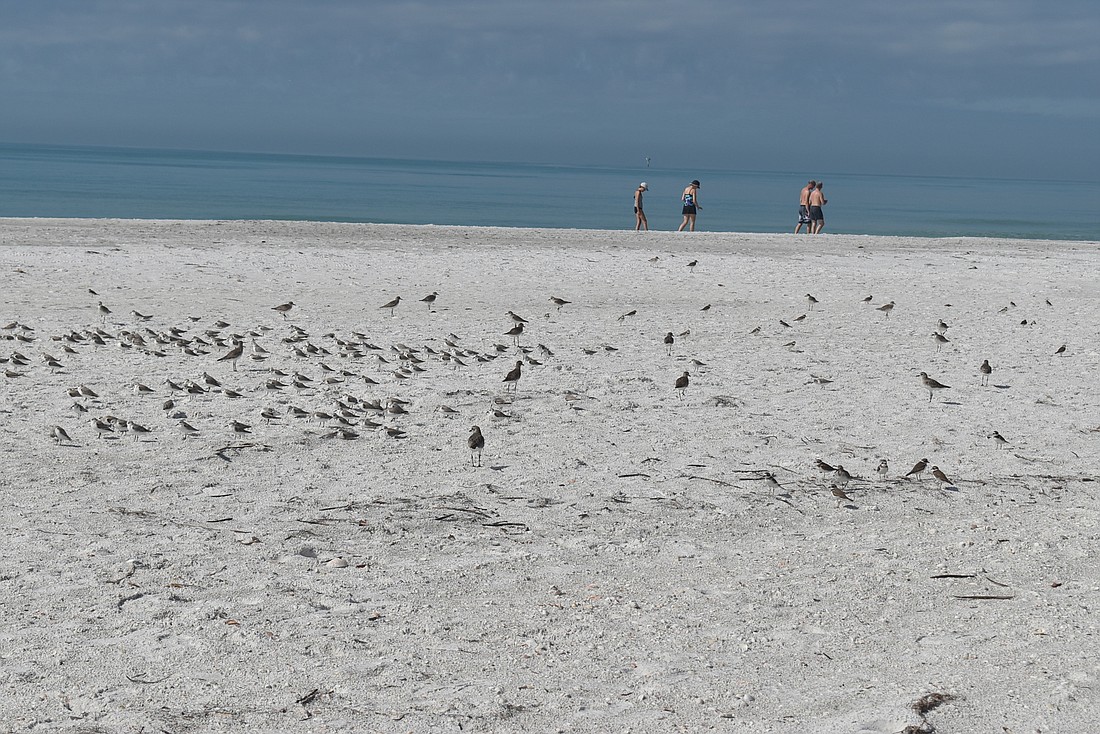- December 13, 2025
-
-
Loading

Loading

It would be hard to live on Longboat Key and not know the basics of turtle nesting season, but before the loggerheads come ashore, another nesting season begins. Shorebird nesting season begins Feb 15, and the Key is already seeing some feathered visitors.
Red knots are the earliest and have already settled in the area. A Feb. 6 survey turned up more than 100 red knots on Lido Beach, said Sarasota Audubon Society researcher Kylie Wilson. They’re not actually nesting here, but rather wintering — just fueling up before they head to their real breeding grounds.
“They migrate from here, up north to nest in the Arctic tundra,” Wilson said. “They're one of the kind of key birds for studying migration because they make these incredible, long distance migrations from the Arctic down to their wintering grounds.”
Though they’re not raising families here, red knots provide a good early season reminder of how to treat shorebirds. In order to make that journey, and later in the season, in order for other birds to nest successfully, they need as much rest as they can get. Save Our Seabirds Avian Hospital Technician Rachel Pettit’s favorite reminder about bird watching is that it goes both ways — if you can see them, they can see you. If you think you’ve given them a wide enough berth, walk a little farther away still. Fill in holes because like during turtle season, younglings can fall in and exhaust themselves trying to get out.
“I really don't want to put any stress on them, (so) I’m making sure that even if I know they're not nesting yet, I still get them a wide berth,” Pettit said.
Meanwhile, wading birds are already bringing the area into “baby bird season,” said SOS veterinarian Maria Passarelli. Species like the great blue heron, black crowned and yellow crowned night herons, ibis, roseate spoonbill, green heron, the little blue heron and snowy egret nest in trees away from people, so their nests can’t be seen as often.
“If they can successfully find a mate, build a nest, have some eggs and then you know, raise their young, they'll just rinse and repeat a little bit later in the season because the baby birds grow up so fast,” Passarelli said. “If they can find enough food, they’ll definitely try to get a couple more in.”
When it’s time for seaside nesting, the area’s main birds are snowy plovers, least terns, black skimmers and American oystercatchers, Wilson said. Because of beach erosion, most of the shorebird nesting occurs on Lido Beach, though least terns have enjoyed the scrubby expanse of the former Colony property as well as gravel roofs as sandy substitutes in recent years. As for where they’ll end up this year, that remains to be seen, Wilson said, though it’s a good bet to expect birds on North Lido Beach or Whitney Beach, away from where people often walk. Shorebird nesting season is listed as running until September, but it really ends when all the nesting birds and maturing chicks have left the area. Last year, it ended in late August.